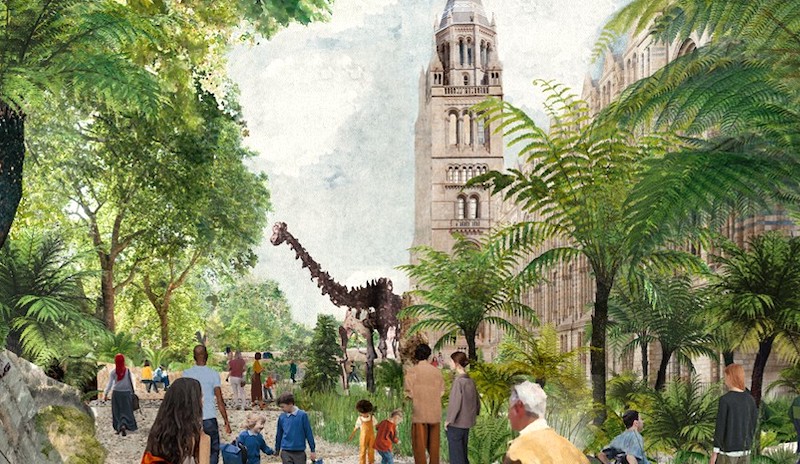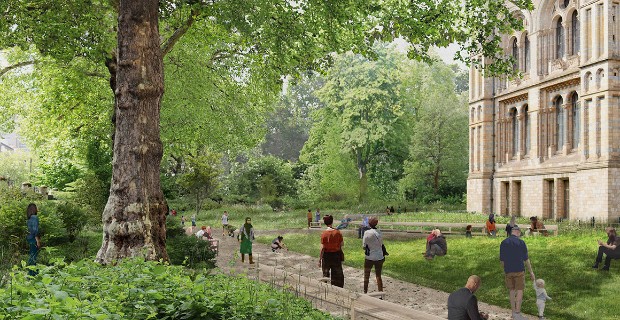
Leading a coalition of museums and wildlife organisations, the Natural History Museum’s Urban Nature Project will not only transform its London gardens into a biodiversity hub, but critically it will create an urban nature movement through a UK-wide learning programme for young people, families and schools. The project will develop and deliver online, onsite and national monitoring programmes and will include an onsite education centre, a range of citizen science programmes and a scientific ‘living lab’ where the Museum’s existing scientific work will continue, and deliver cutting edge research to be shared globally.
The project, which has seen scientists from the Museum come together with experts in the field over several years of planning, is due for completion in 2023. Primarily designed as a response to the urgent need to both monitor and record changes to the UK's urban nature and fill the urgent skills gap required to do so, the Urban Nature Project is a transformational project that will not only galvanise people to reengage with the nature on their doorsteps, but also build on the Museum’s scientific and public work and trigger a movement that will ultimately help to safeguard nature’s future.
The project will focus on engaging diverse audiences that are least likely or able to access nature, and aims to help people from across the UK form a lifelong connection with the natural world, learn about its value and inform and empower people to understand and protect it.
Approved Plans for the Museum’s South Kensington Gardens
The new gardens will be a fully accessible green space and biodiversity hub in the heart of the capital. Museum scientists and external experts are working together to sensitively develop a project that will both protect and increase the biodiversity currently established. In just one acre of the five on site, examples of woodland, grassland, scrub, heath, fen, aquatic, reedbed, hedgerow and urban UK habitat can all be found – under these new plans these habitats will be increased and extended. Around 3,400 species have been recorded in the existing Wildlife Garden over the years, some of them for the first time, and each Autumn it is also home to three Greyface Dartmoor sheep, who play an integral role in sustainably managing the garden.
When complete, the Museum gardens will take people on a journey through a changing world. They will provide a fully accessible opportunity for visitors to connect with nature and explore the incredible diversity of life on Earth. A brand-new cast of Dippy, the Natural History Museum’s iconic diplodocus, will have pride of place. This Dippy will overlook the new east gardens which will tell the story of the Earth’s history. With plants and fossils reflecting each geological era, visitors will appreciate – visually – how old our planet is and learn about the profound impact humans have caused in a short space of time.
The west gardens will be a ‘model’ for urban nature, with different habitats showcasing the biodiversity that can be found in the UK’s urban spaces. Featuring an outdoor learning centre, the west garden will be the platform for the Museum’s national programme with activities aimed at multiple audiences.
The South Kensington gardens will also host a living lab where scientists, volunteers and the public can study the changes in urban nature and share this research across a network of national partners. It will create an exemplar for sustainable urban nature and a space where a broad and diverse audience can engage in year-round learning programmes, outside in nature.
FInd out more about the Urban Nature Project here.

